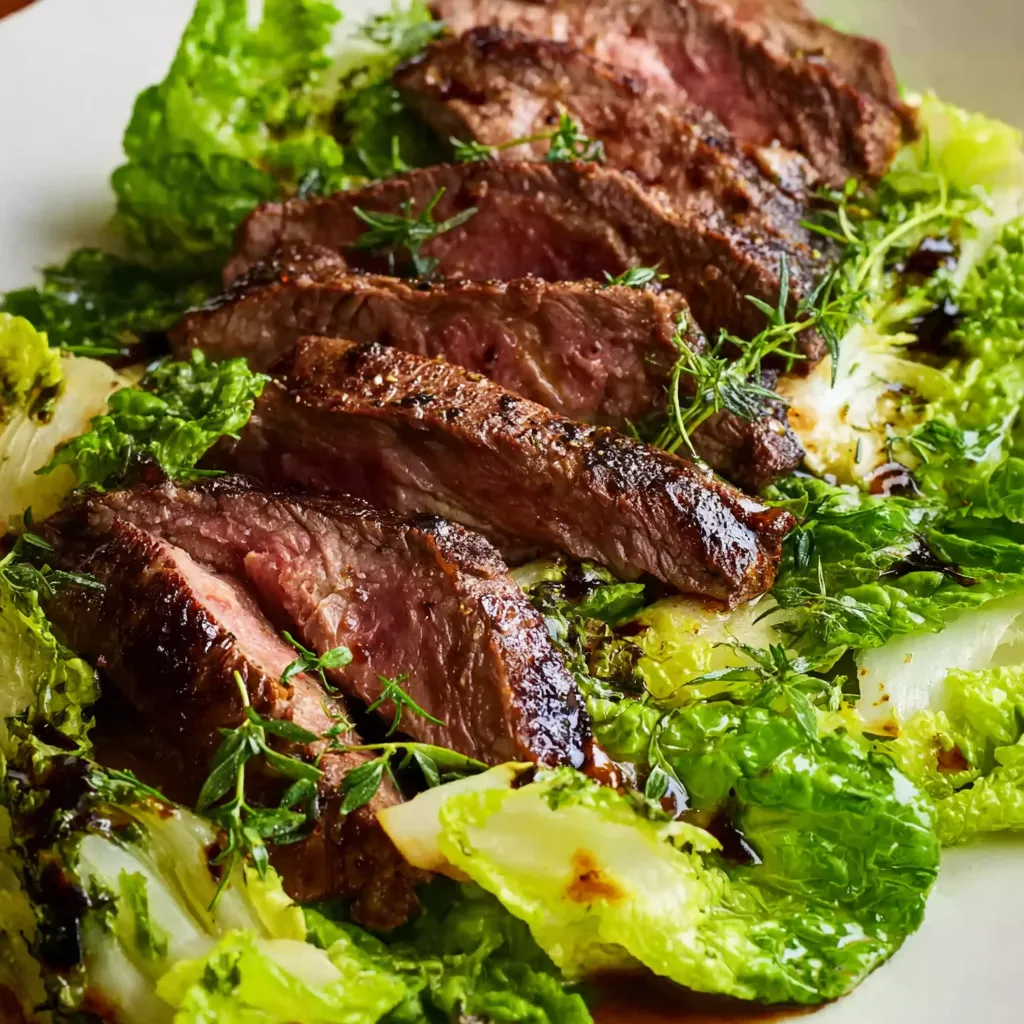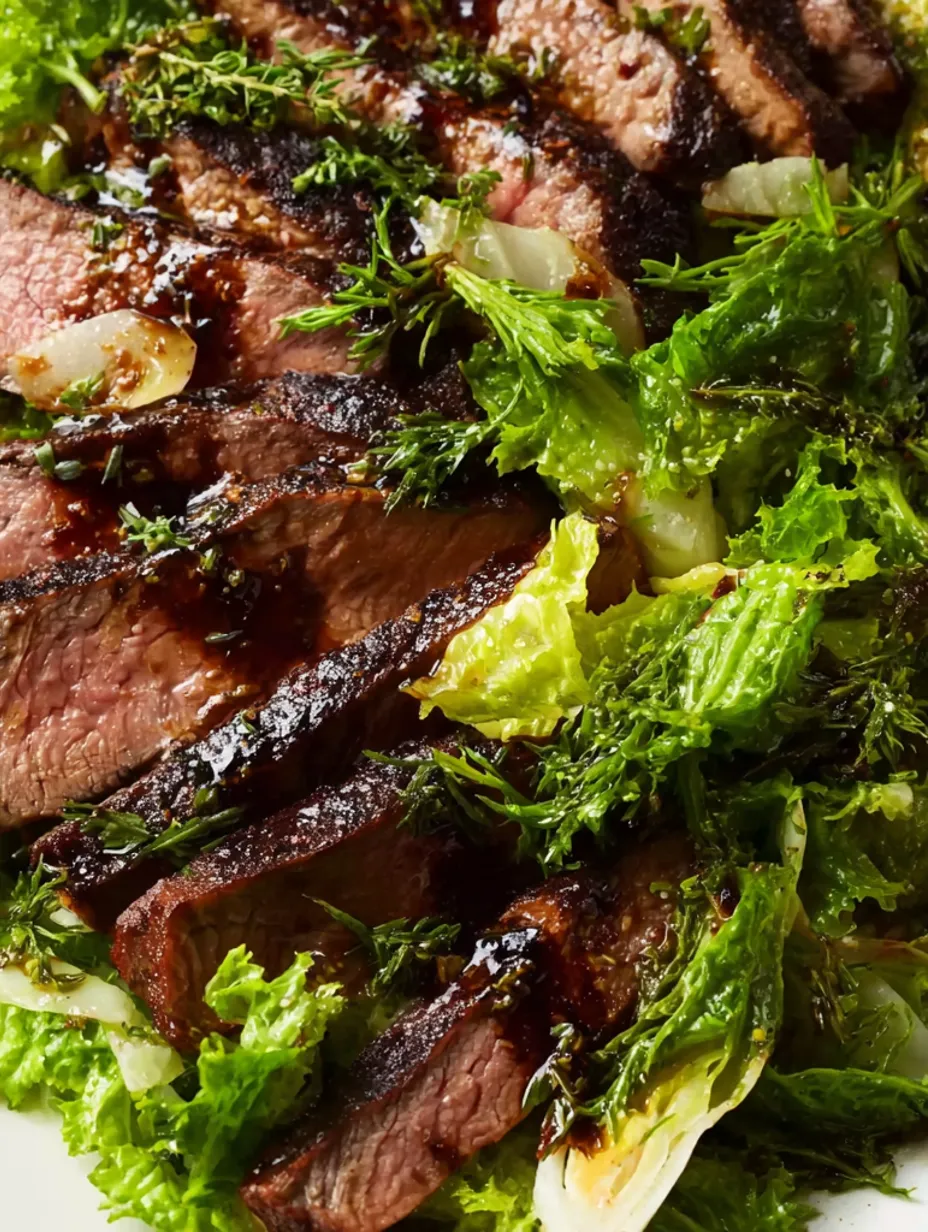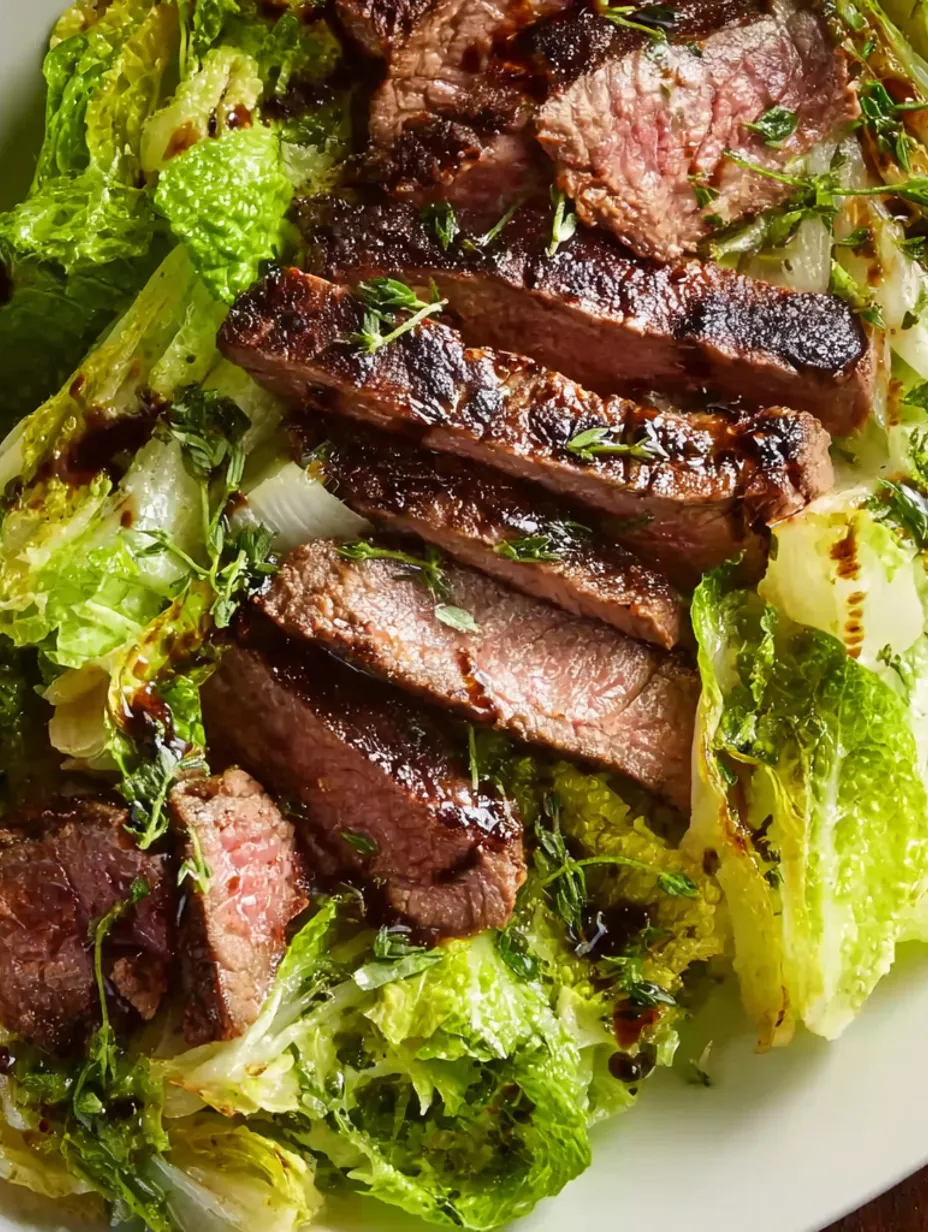 Bookmark
Bookmark
This quick steak dinner comes together in just twenty minutes and brings bold flavor with minimal effort. Cooking the herbs directly in the pan with the steak not only infuses the meat but also crisps up the herbs into a fragrant topping. The escarole finishes in the same skillet for easy cleanup and extra flavor.
I first made this on a rushed Tuesday night and was blown away by how much it tasted like a fancy bistro dinner with hardly any mess.
Ingredients
- Sirloin steak: provides juicy meat with rich flavor and cooks quickly when cut to half-inch thickness
- Salt and pepper: are used in layers to season both the meat and greens
- Olive oil: is the base fat for both searing and flavor infusion
- Unsalted butter: is optional but adds richness during basting
- Garlic cloves: are smashed to mellow their intensity and crisp nicely in oil
- Fresh thyme: gives woodsy aroma while frying crisp
- Sage: adds earthy sharpness and crisps up beautifully
- Rosemary: offers piney notes that intensify in the hot pan
- Escarole: has a hearty bite that softens quickly and soaks up steak drippings
Choose steaks with a good marbling and bright color and pick sturdy fresh herbs without wilting tips for the best results.
Step-by-Step Instructions
- Prep the Steak:
- Pat the steak dry using paper towels to help achieve a good sear. Sprinkle evenly with half the salt and pepper to season both sides thoroughly.
- Heat the Skillet:
- Place a heavy skillet over medium high heat and add one tablespoon olive oil. Wait until the oil shimmers before adding the steak to ensure a proper crust forms.
- Sear the Steak:
- Lay the steak flat in the hot pan and leave it untouched for about two and a half to three minutes. Flip when well browned and sear the second side.
- Add Aromatics:
- Right after flipping add the remaining olive oil along with smashed garlic herbs and butter if using. Tilt the pan so the oil pools then use a spoon to baste the steak continuously for two to three minutes. Check internal temp for doneness.
- Rest the Steak:
- Move the steak to a plate and top with the crispy garlic and herbs. Tent loosely with foil and let rest so juices redistribute inside the meat.
- Cook the Escarole:
- In the same skillet add chopped escarole and sprinkle with remaining salt and pepper. Cook for about two minutes stirring occasionally until the greens wilt and develop crispy edges.
- Plate and Serve:
- Slice the rested steak thinly across the grain and serve over the sautéed escarole. Spoon any herby drippings or garlic on top for extra flavor.
 Bookmark
Bookmark
I love how rosemary crisps and perfumes the kitchen it reminds me of Sunday meals at my grandmother's where fresh herbs were always part of the roast.
Storage Tips
This dish is best served fresh but leftovers can be stored in an airtight container in the fridge for up to two days. Reheat steak gently so it does not dry out and warm the greens in a skillet to revive crisp edges.
Ingredient Substitutions
If escarole is unavailable use kale or chard which hold up well to heat. For the steak flank or ribeye can be used just adjust sear time based on thickness. You can skip butter to keep the dish dairy free and still enjoy the garlic herb flavor from the oil.
Serving Suggestions
Pair with crusty bread or roasted potatoes for a hearty plate. A crisp green salad dressed with lemon vinaigrette also balances the richness of the steak. For drinks red wine or sparkling water with lemon works well.
 Bookmark
Bookmark
Cultural Context
Pan searing steak with aromatics is a classic technique found in French and Italian cooking where layering flavor is key. Escarole brings a slightly bitter touch that contrasts nicely with the umami of the meat a nod to Mediterranean balancing.
Frequently Asked Questions About Recipes
- → What type of steak works best?
Sirloin is ideal due to its tenderness and quick cooking time, but flank or ribeye can also be used.
- → Can I substitute other greens for escarole?
Yes, kale, spinach, or Swiss chard are great substitutes if escarole is unavailable.
- → What’s the best pan to use?
A cast iron skillet provides the best sear, but stainless steel or nonstick pans also work well.
- → How do I know when the steak is done?
Use a meat thermometer—125°F for medium-rare, or adjust based on your preference.
- → Can I skip the butter when basting?
Yes, but butter enhances flavor and helps crisp the herbs. Olive oil alone will still work.
- → Should I slice the steak before serving?
Yes, slice thinly against the grain for the most tender texture.
